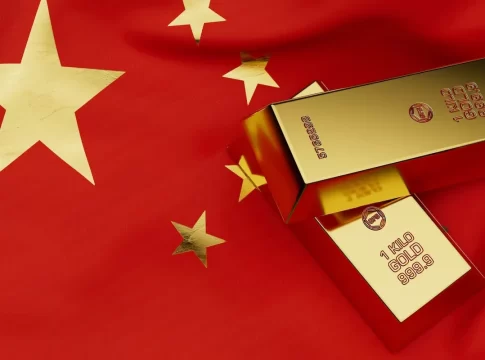China has unveiled what could become the largest gold mine ever discovered, a breakthrough with vast economic and geopolitical implications amid escalating competition with the United States over global resource dominance.
According to Chinese state media reports, a geological team operating in Pingjiang County, Hunan Province, uncovered over 40 rich gold veins within the Wanguo mining site. Early estimates suggest 330 tons of gold ore have already been confirmed at a depth of 6,600 feet, with 3D modeling indicating the potential for up to 1,100 tons at even greater depths of 9,800 feet.
If verified, the Wanguo Mine could become the largest gold deposit in the world, surpassing South Africa’s South Deep mine, which holds an estimated 1,025 tons of gold, according to industry publication Mining Technology.
Beyond the sheer volume, what makes the discovery exceptional is the gold concentration in the ore — an average of 138 grams per metric ton, a rarity in modern mining. For comparison, most major gold operations yield between 3 to 8 grams per ton.
“Many drilled rock samples have shown visible amounts of gold,” noted Chen Ruolin, a senior prospecting expert from the Hunan Provincial Geological Bureau. He emphasized that such purity levels in large-scale mining are “nearly unheard of” and could revolutionize extraction efficiency.
If extraction is confirmed and commercially viable, the total value of these reserves could exceed $83 billion, strengthening China’s financial reserves at a time of rising gold prices globally.
The discovery comes against the backdrop of increasing resource nationalism and geopolitical tension, particularly between China and the United States. While much of the international spotlight has been on rare earth elements, which are critical for clean energy and defense technologies, gold remains a strategic reserve asset in a world navigating currency volatility, inflation, and geopolitical instability.
“This is not just a geological win for China—it’s a strategic signal,” said Dr. Rami El-Far, a Middle East mineral economist based in Cairo. “Gold is a hedge, a reserve, and a geopolitical tool. This discovery, if commercialized, gives Beijing more leverage as global demand for hard assets grows.”
Despite being the world’s top gold producer, accounting for roughly 10% of global output, China is also its largest consumer, importing nearly three times more than it produces. This has long been viewed as a strategic vulnerability, especially during economic crises.
The Wanguo discovery could change that dynamic. “It may allow China to rebalance its gold trade position while reducing dependence on external supply chains,” said Zhou Ming, a trade policy analyst with the Shanghai Institute for International Finance.
Markets have already begun reacting. Gold futures rose sharply after the announcement, with some analysts predicting long-term implications for pricing, supply chains, and investment flows.
“Should these reserves come online within the next decade, China could set new terms in the global gold market,” said Dr. Nadine Khaled, commodities researcher at the American University in Cairo. “It also puts pressure on African, Latin American, and Russian producers to scale up exploration and innovation.”


